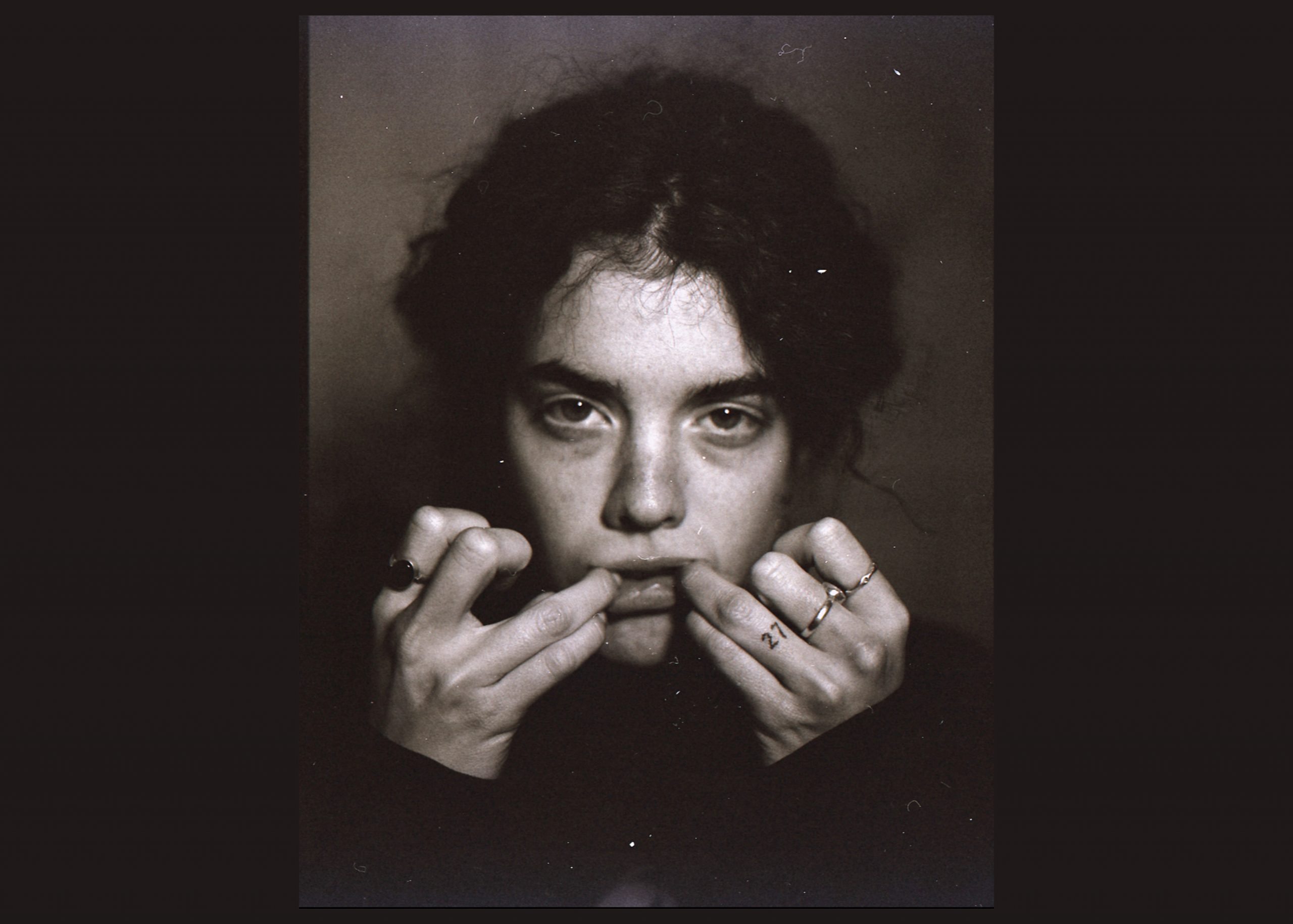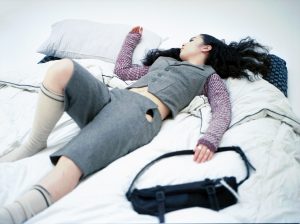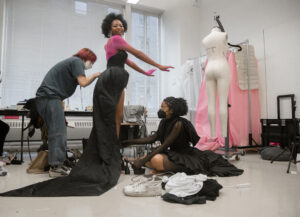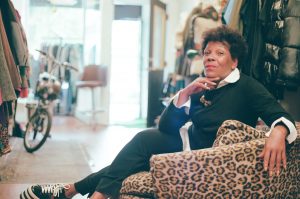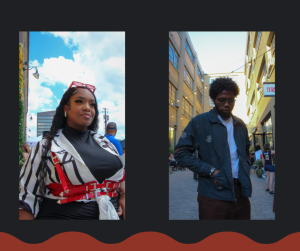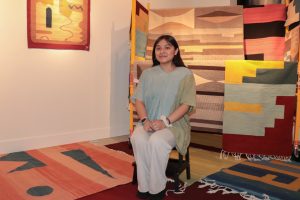FOLD/UNFOLD: fashion designers and artists on dress, tactics, community, and power in zhegagoynak/zhigaagoong (Chicago) and beyond.
When you first walk into fashion photographer Madeline Hampton’s apartment/studio, the number “27” painted on the entrance wall in chaotic white strokes doesn’t assert itself as separate from the overall industrial aesthetic of the space. It takes time to notice that this is a signal that Hampton, also known as “27,” lives and works here. It’s an uncanny and highly personal visual that feels appropriate for an artist who based a recent shoot around Yves Tumor’s feeling of licking an orchid.
Hampton makes cinematic fashion images that don’t so much attract you to double-tap, but instead compulse an ongoing encounter with the picture. Hampton’s power to interrupt the scroll culture of Instagram feels like a power coming from somewhere not quite here–an offering to feel otherwise through the medium of fashion photography. The colors hit somewhere in your jaw, the angles glimmer. It feels possible to be both here in the material body and moving in a dream dimension. Hampton is an artist who makes you feel like it is your particular responsibility to trust the feelings your body is receiving from the invisible worlds we live in but don’t acknowledge, and make things with that force–to share the unbearable of yourself.
When I visited her apartment for this interview, she brought me up the fire escape and we sat on the reflective silver roof overlooking the Chicago skyline, almost yelling when the train passed by at eye level. We talked about the role of trust in making a collaborative fashion image, the process of channeling internal knowing into a material artistic practice, the power of mentorship, and failure as a portal.
Hampton surges. I hope you can feel her force in this conversation and trust what it erupts in you.
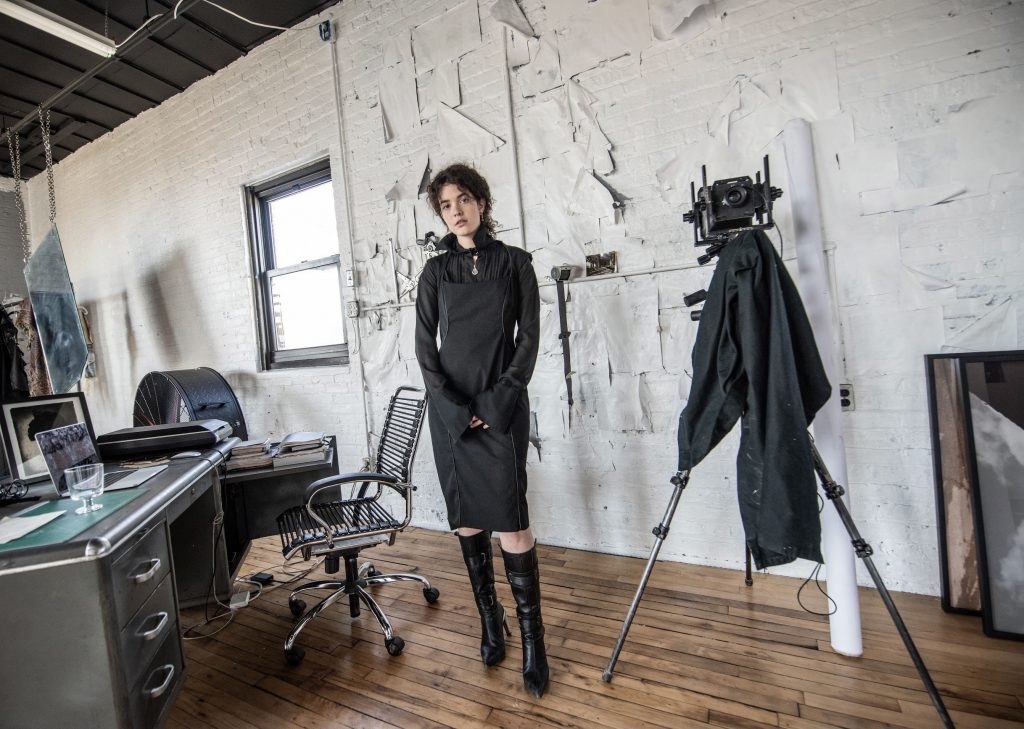
row särkelä: How were you introduced to fashion photography?
Madeline Hampton: I first got into fashion photography through an internship I got through my roommate at the time, who was from India. She and her mom told me to come visit New Delhi. I was like, yeah, but I want to be doing something I love while I’m there. Her mom got me in contact with one of her friends. Later, I talked to her, and showed her my portfolio. She then sent me some photographers and I eventually emailed the one whose work I gravitated to the most. His name is Tarun Khiwal and he’s a very prolific fashion photographer in India. He responded later the next day and offered that I come study under him in his studio. Going there was the most pivotal point for me, where I felt like fashion is where I wanted to go.
I loved working with Tarun. He showed me what it means to be a person before being an artist. That was when I realized that it’s not about making. It’s about sitting down and reflecting, and then making. Right when I came to his studio, he started treating me like family. Imagine being eighteen and sitting down somewhere in a country you’ve never experienced before and someone goes, “Who are you, why are you here, and where are you going?” Not surface, but genuinely, who are you and what are you making? [It makes you] really think about what you want.
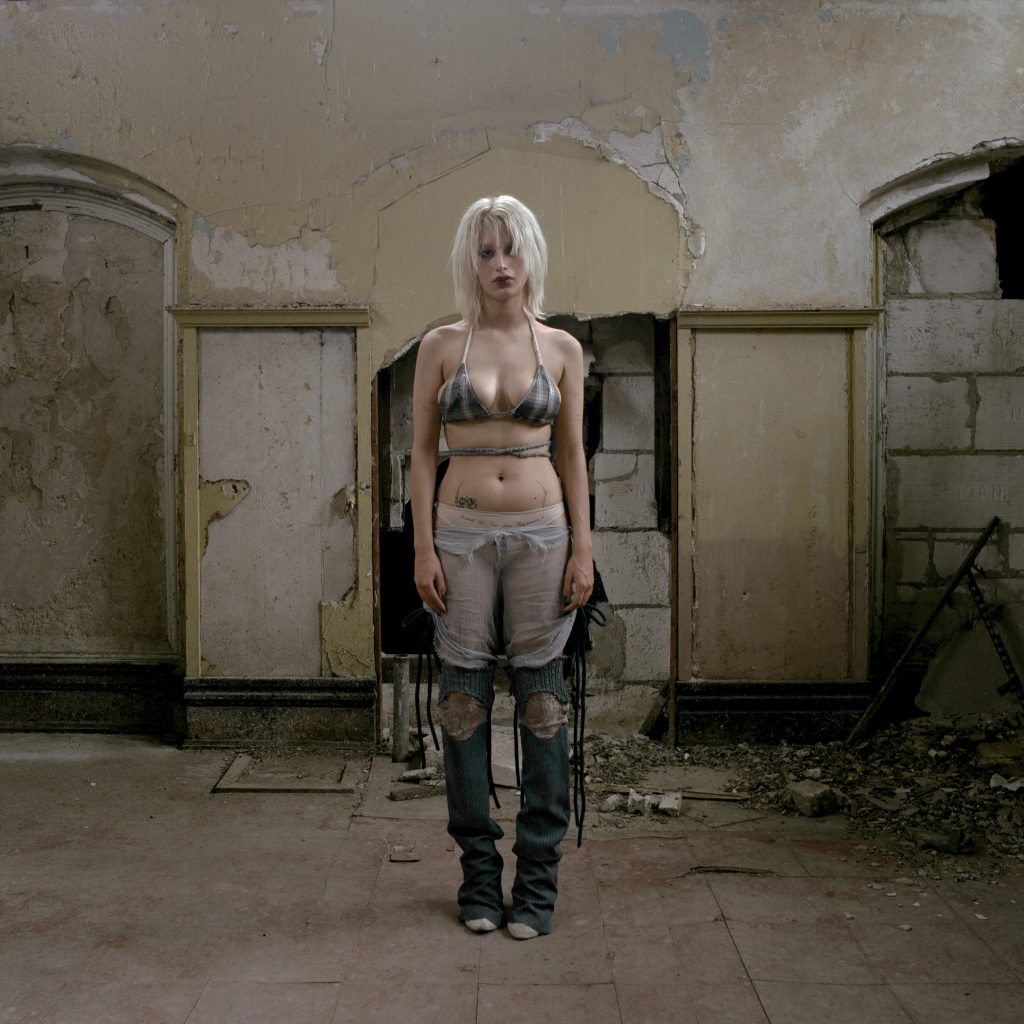
rs: Do you feel like you’re doing healing work in preparation for your artistic practice?
MH: As an artist, I catch myself all the time doubting myself or feeling stagnant, or waking up and not wanting to leave the house. I want to do the things I love, but sometimes there’s things that prohibit that like COVID, mental health, and past experiences that need to be healed. That is what it’s like to be a human being. No one addresses that and then people feel crazy inside when they feel this sense of loss within them.
I definitely feel like my artistic practice comes from a place that I don’t even understand sometimes. I see what I want in my head. It curates this strong feeling, this ephemeral channel. I trust that whatever’s going to happen will happen because I trust the feeling I’m getting from it. And that’s when I’m like, alright, let’s just go. This sounds like a crazy idea, but let’s just do it–it could turn out the way I want it to because of the feeling it gave me. A lot of my friends are my favorite artists and my favorite people to be around because they feel the same things I feel when they think about their work, and that infuses itself in the final product without even realizing it.
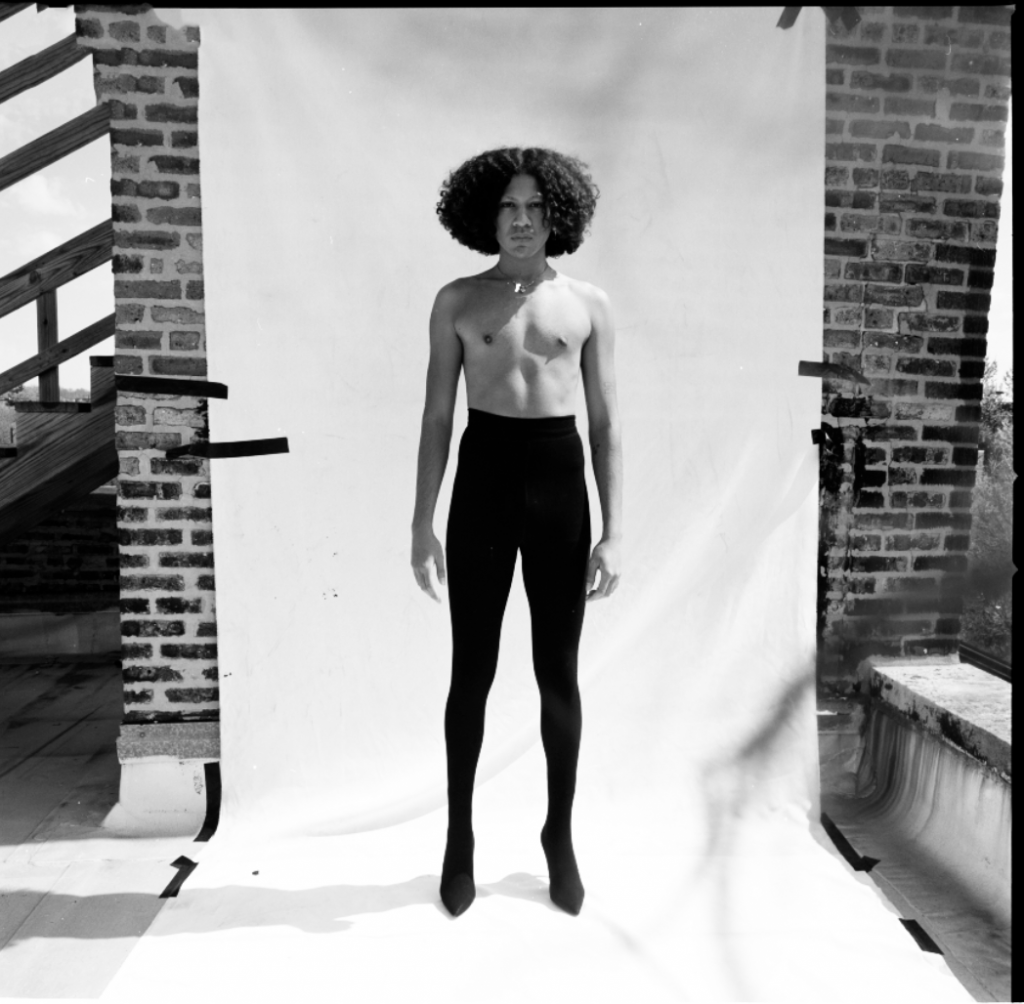
rs: Where do you think those feelings emerge from? Is it from dreams? Do you feel it in a certain part of your body? How do you know you’re having the feeling?
MH: Ever since I was a kid I listened to music, right? And I used to have this pink CD player that I would wear alone on the bus everyday. For me, that was the thing [that allowed me to just] turn off [and] exit my mind, and there would be this screen in my head that would just be flashing [with] all of these things. And I’m like, what is this? This isn’t mine, but it feels so close to mine, you know? My mind can disorient me, which is actually kind of bad sometimes because I’m not living here fully present [due to] these things I make up in my mind. [They] feel so real that I want to stay there, but I have to travel between the two. I would use [the screen in my mind] as escapism until my senior year of high school when I figured out what art was. [That’s when] I met an [art] teacher who was like, “you should take my class.” And then when I was introduced to art, I was like, wait, I could take the things inside [me] and put them out into a physical space. That’s how I got into making work–through understanding input/output. The screen [inside me] feels like [I’m] watching something play, and then I have to stop and freeze-frame it. I get this instinctive feeling that shoots from my gut to my head, that goes, “lightbulb!” and I think, “I liked the way that made me feel, so I’m going to write it down.”
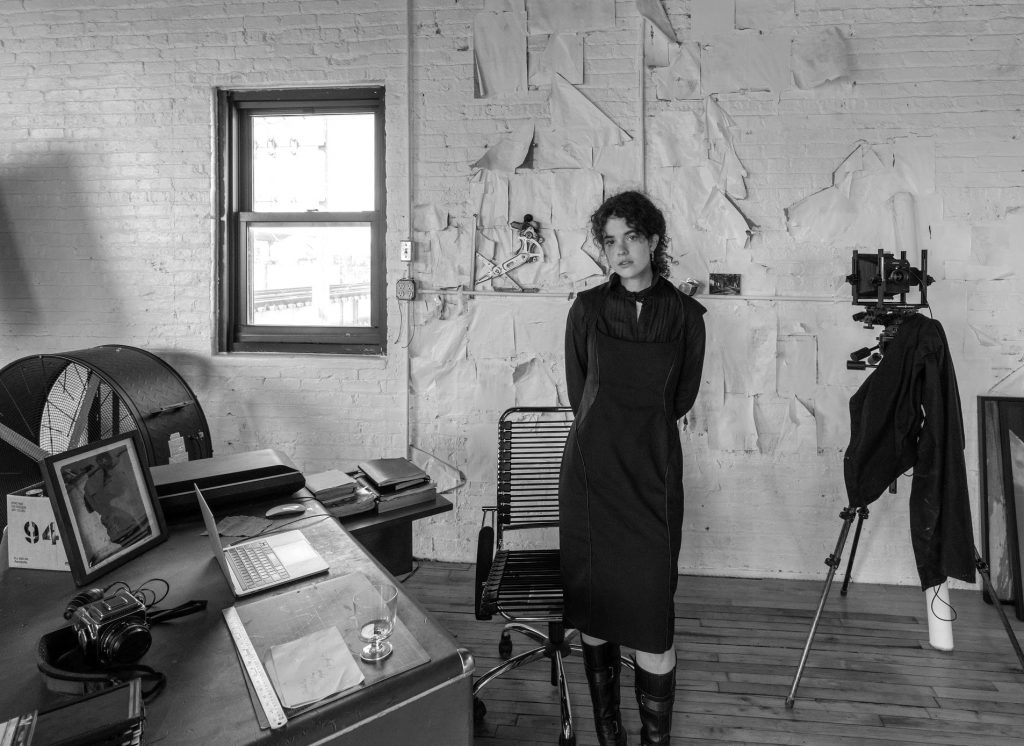
rs: You write it down, you don’t draw it?
MH: No, I can’t draw. I have huge respect for people [that can] and admiration for painting and drawing–every type of art. But for me, in my specific practice right now, I think photography is exactly what I need to cast out my ideas. I knew I had something that I loved, and I was trying the conventional way of going to a school. I applied to the Art Institute of Chicago last minute, five minutes before the deadline. I just submitted anything I had and they accepted me. My parents were like, “Is this fake?” because they wanted me to go into computer science. And that’s when I started to dive deeper into the realm of art. Specifically, the growth of my ideas and my execution; what you just asked, putting this (gestures towards her head) out into [the world].
rs: So it’s once you came to Chicago that you started being able to make a physical home for your internal feelings?
MH: I started making work in high school. That’s when I first started taking pictures. And I carried that out through Chicago. I found this wonderful teacher in my photo department [at SAIC] who became one of my mentors. I took every class she teaches. You ever just meet someone, and you’re like, this is the person that I want to teach me everything I know? It was Marzena Abrahamik. I initially wanted to study film, but the film department isn’t what I wanted for myself. However, the elements of cinema will always inspire my work. I like making pictures, I don’t like taking them. The last thing I think about is holding the camera and taking the photo. I just think about what’s in front of me, what I am putting into the space, and what this means. Sometimes I don’t think about what it means, sometimes I just say there is something telling me to do this and I’m just going to do it.
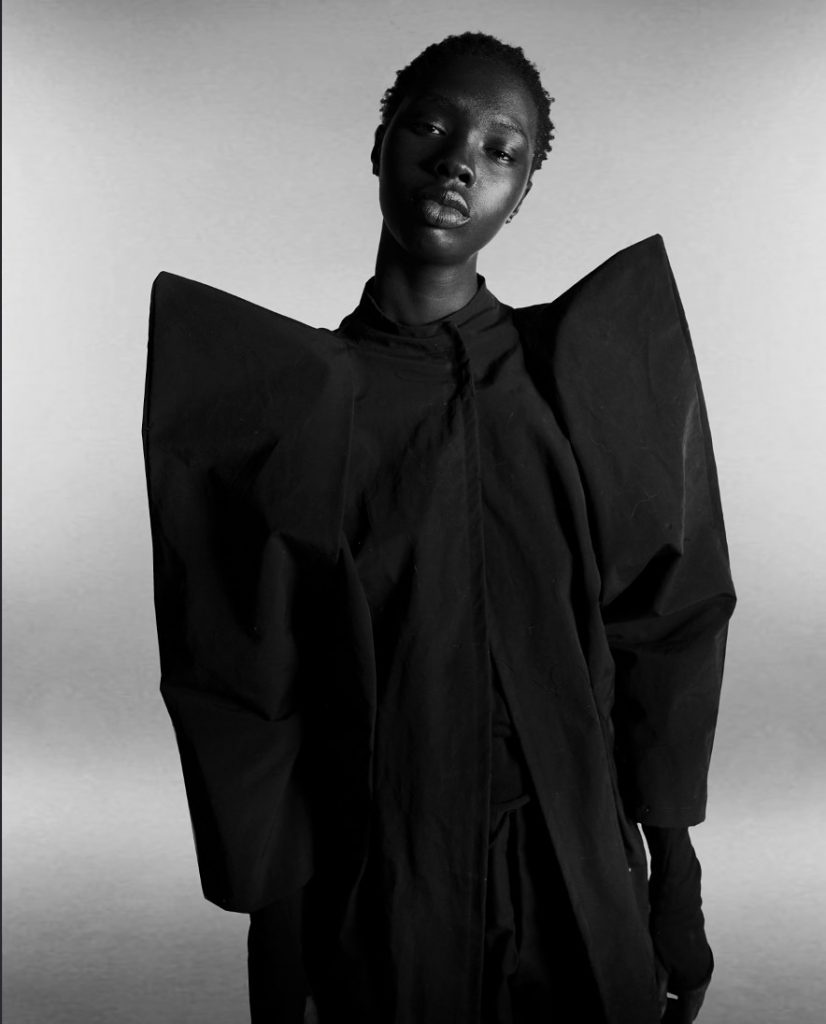
rs: In your photos, your presence as a photographer is palpable. Did you have to know who you were before making good photos?
MH: I think I started making some of my best work when I started trusting myself, which is easier said than done. My method of making work is 50% planning, 50% impulse. You have this outline, but there’s room to break its barriers. When I just trust that feeling and trust myself, that’s when I can make the work I want to make. Because I’m not projecting my expectations on the work, I’m letting it become its own life.
rs: How does collaboration show up in your work?
MH: [My collaborations] can be totally by fate–like, I meet them and there’s this electric connection. I feel like [when you’re] an artist and you meet someone, you are channeling each other on a creative level. It just becomes a drug. You’re exchanging each other’s minds, you’re super inspired by them. [Sometimes] I meet [my collaborator] through friends, [and other times I] see their work and I’m like, “I can’t understand why I love what you do but I love what you do and I would love for us to work together.”
I’ve known [fashion designer] Sam Fissell for two years. We had no communication at all until Sam started making clothes. I was doing my own thing, and then Sam hits me up and is like, “I have this garment,” and sends me photos. I had been seeing what he was doing and really liked it. He asks if I want to shoot this piece, and I was like, absolutely. He came over and I had some ideas for it. In our tree piece, I imagined what it would feel like to lick an orchid, like the Yves Tumor song. I like the way that makes me feel. It ended up looking great. I can’t describe that picture, [it] came from another place. I guess the feeling that came out of licking an orchid is surreal. It’s what it’s like to experience something beautiful and interact with it, either absolute beauty or chaotic beauty.
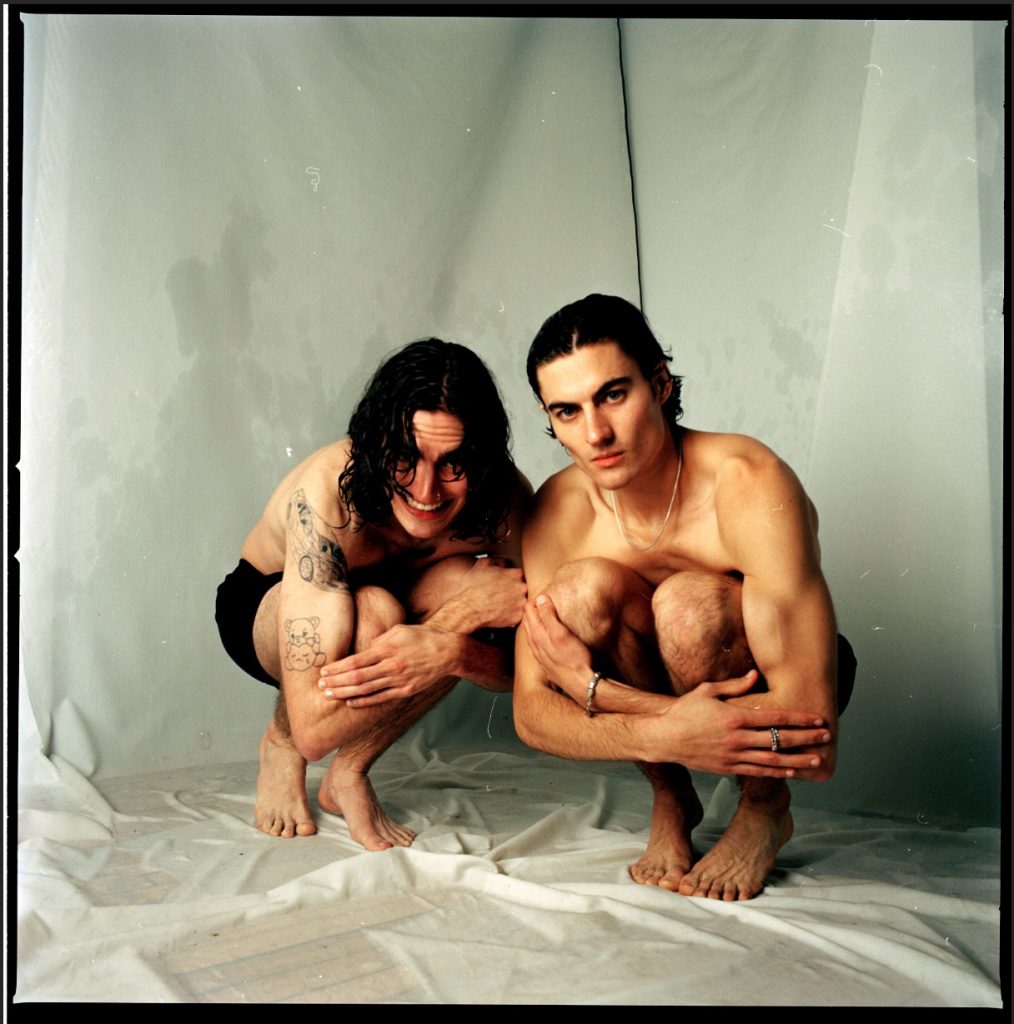
rs: What projects do you have coming up?
MH: I have a couple projects. Roy Zhu is one of my best friends, and him and I are planning on doing some work together. Sam is also making custom pieces for this idea I have, which I’m really excited about. I’m also doing some work for other designers and boutiques in Chicago. I’m possibly going back to India this summer, depending on the situation with COVID. I believe wherever I will go or whatever I do will be where I’m meant to be doing in that moment. That’s all I could ask for, just to learn and meet more people that will simply help me grow into a better version of myself everyday.
rs: What is your niche in the fashion world?
MH: I definitely see myself in the fashion world because I feel like I can get away with doing crazy shit. I love editorial work; you can do something so bizarre with it. Your ideas can expand farther because you have clothes now that are speaking to the piece. You’re telling a story that is not only about what I see in my head but also a reflection of the way the world is. And clothes are a huge part of that. It’s really beautiful to see. Fashion gives meaning to your subject, or just builds on the inherent meaning of the subject. Like [in] movies, you fully notice the clothes when the costume design is good. It’s a small piece in a big production, but it’s probably one of the most important. It’s that part of the picture that stuns people. With fashion photography, it’s hard. We’re so used to going through social media and becoming desensitized to normativity. It’s the same picture and the same feeling. So I think to myself as an artist: we live in a digital era, so how am I going to make a picture that pushes on someone and isn’t something you normally see? It makes you actually sit down. That’s the power of aesthetic. I think our world is chaotically beautiful, and that’s what I want my images to be.
rs: Do you shoot digital or film?
MH: I mostly shoot film. I’m leaving it up to chance when I take these pictures because I don’t know what they [will] look like. I did a shoot the other day where we got nothing out of the shoot. The cameras weren’t working–we got nothing. But I got an experience to learn from, and the next thing I made derived off that. If you call that failure, then it’s a good failure.
rs: Yeah, it’s a pore that opened.
MH: Yeah, all these failures are just little mini portals that we’re just entering into all the time.
rs: Where do you pull inspiration from?
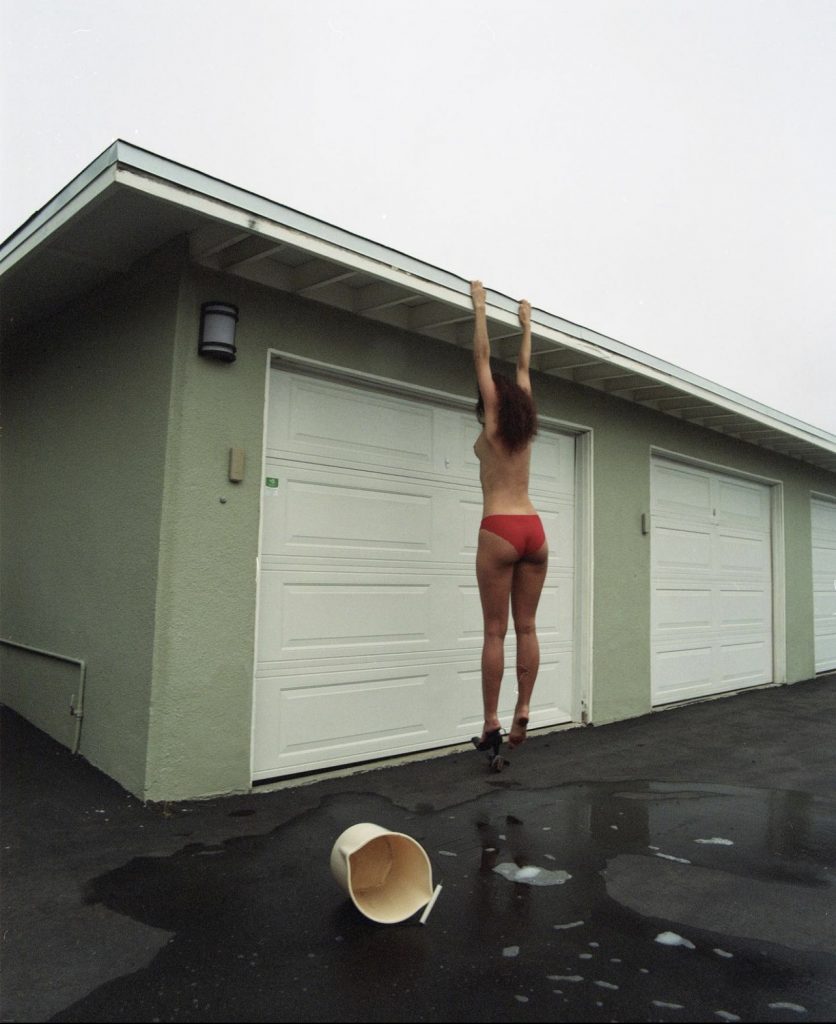
MH: It’s hard for me to pick specific artists since I come across a new one everyday that I love, whether it’s a writer, director, photographer, painter, etc. Everything is a chance for you to catch inspiration. A lot of the time, though, I am really inspired by cinema and dance. The people that I surround myself with are also huge inspirations. My roommates are both so talented and independent. It’s a support system that I never knew I needed until I had it. The people I make work with become my closest friends because of how they make me feel when I’m vulnerable with them when we’re making a piece together. That inspires me, because we are bonding on a level a lot of people can’t bond on. I hold that really close to myself. I think it’s important to collaborate because it’s not about my voice, but every single person who believes in this thing [they’re] making together. The whole idea of things being “mine” is very territorial. There’s an importance in “ours” instead of “mine” that is important for artists to understand. We’re all each other’s teachers.
rs: You took a totally different path than going into computer science like your parents might’ve wanted. How is your relationship with them now?
MH: When you go off to college, you want to experience your own life. I rejected them for a long time until I started to balance out my life. It was hard for me to get to a point where I could look at them for who they are. They’re just people who had a child. They had to go through this parenting thing and it wasn’t easy. I have this unconditional love for my family now. Like, no matter who or what you feel or [what] has occurred, you are my family and so I love you. My mom was actually an artist and my grandmother was a musician. My grandfather was a photographer, which is wild because my dad grew up in this military family and everyone is very serious. My brother is a musician and we’re these wild young kids, super animated and creative. Everyone’s always like, where did it come from? I don’t know where it came from, but I love it. That’s my purpose: my creativity. However I use it will be how I define myself in this world.
Featured image: Image: A black and white photo of Madeline Hampton, who looks forward at the viewer with her fingers in her mouth. On her hands are various rings and a tattoo of the number ’27’, which is on the ring finger on her left hand. Photo by Dally Dew Drop.
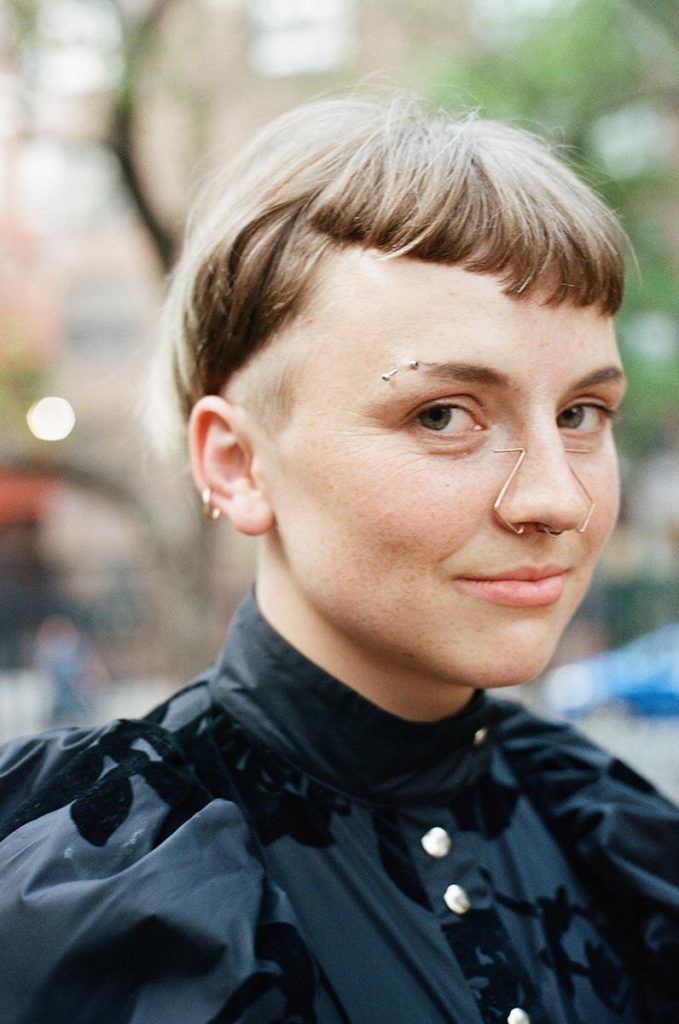
row särkelä is an organizer, artist, and white settler raised in tiwaland and living in zhigaagoong. in “fold unfold,” row addresses the seepages between fashion and social movement organizing, surfacing the work of designers and artists who shape and intervene in chicago’s vestiary landscapes. row considers taste to be a political project and investigates how design and dress unfold in relation to local forms of racial capitalism.
